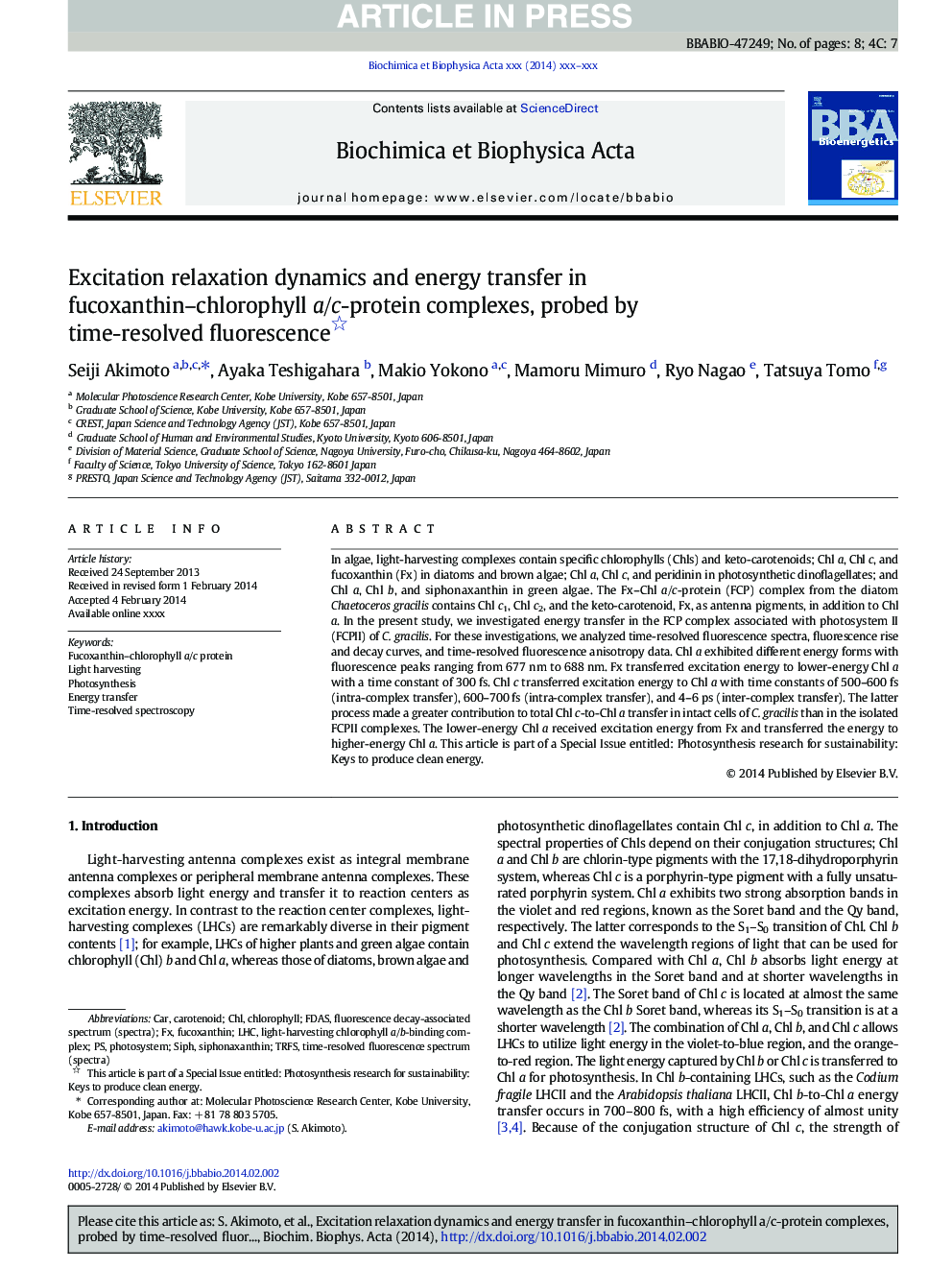| Article ID | Journal | Published Year | Pages | File Type |
|---|---|---|---|---|
| 1942177 | Biochimica et Biophysica Acta (BBA) - Bioenergetics | 2014 | 8 Pages |
Abstract
In algae, light-harvesting complexes contain specific chlorophylls (Chls) and keto-carotenoids; Chl a, Chl c, and fucoxanthin (Fx) in diatoms and brown algae; Chl a, Chl c, and peridinin in photosynthetic dinoflagellates; and Chl a, Chl b, and siphonaxanthin in green algae. The Fx-Chl a/c-protein (FCP) complex from the diatom Chaetoceros gracilis contains Chl c1, Chl c2, and the keto-carotenoid, Fx, as antenna pigments, in addition to Chl a. In the present study, we investigated energy transfer in the FCP complex associated with photosystem II (FCPII) of C. gracilis. For these investigations, we analyzed time-resolved fluorescence spectra, fluorescence rise and decay curves, and time-resolved fluorescence anisotropy data. Chl a exhibited different energy forms with fluorescence peaks ranging from 677Â nm to 688Â nm. Fx transferred excitation energy to lower-energy Chl a with a time constant of 300Â fs. Chl c transferred excitation energy to Chl a with time constants of 500-600Â fs (intra-complex transfer), 600-700Â fs (intra-complex transfer), and 4-6Â ps (inter-complex transfer). The latter process made a greater contribution to total Chl c-to-Chl a transfer in intact cells of C. gracilis than in the isolated FCPII complexes. The lower-energy Chl a received excitation energy from Fx and transferred the energy to higher-energy Chl a. This article is part of a Special Issue entitled: Photosynthesis Research for Sustainability: Keys to Produce Clean Energy.
Keywords
Related Topics
Life Sciences
Agricultural and Biological Sciences
Plant Science
Authors
Seiji Akimoto, Ayaka Teshigahara, Makio Yokono, Mamoru Mimuro, Ryo Nagao, Tatsuya Tomo,
